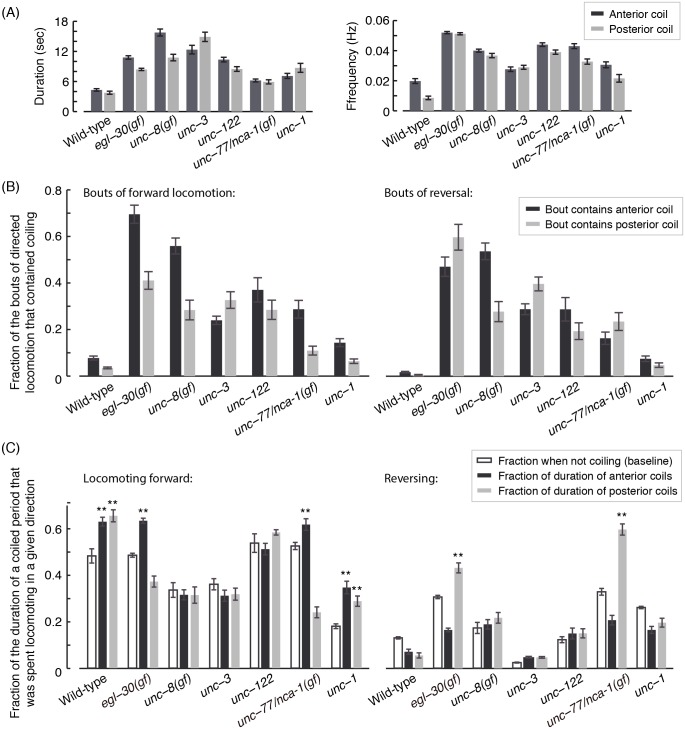Fig 5.
(A) The characteristic duration (left) and frequency (right) of continuous periods of coiling. (B) The fraction of bouts of forward (left) and backward (right) locomotion that contained coiled postures. The majority of bouts of directed locomotion of egl-30(gf) and unc-8(gf) mutants involved coiled postures. (C) A continuous period during which the animal was coiled, termed a coiling event, could contain sub-periods of forward or backward locomotion in addition to dwelling. Filled bars depict the fractions of the durations of coiling events that were spent exhibiting locomotion in a given direction. The mean propensities for directed locomotion when the animal was not coiling (empty bars) were measured as a baseline for comparisons. Asterisks denote that the propensity during coiling of the locomotion state in question was higher than its corresponding baseline (p<0.01). In all panels, 9–12 L4 larvae of each genotype were imaged at 10 frames per second for 2–4 hours, yielding a total of approximately 105 images. Error bars and thin lines depict animal-to-animal variation (mean ± s.e.m).

